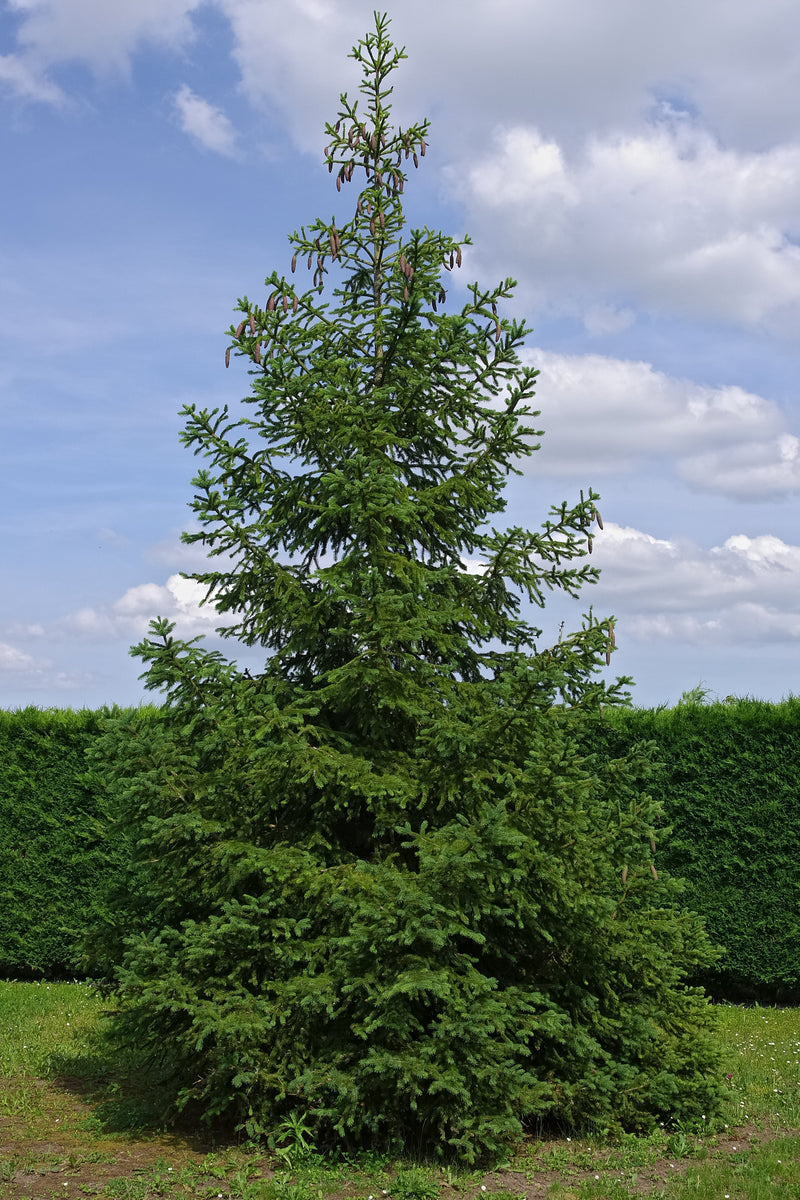
In fact, too much pruning can cause damage to young spruce trees. Spruce trees have a beautiful, pyramidal shape when simply left to grow, and do not need to be pruned in order to thrive. Does the Norway Spruce need to be pruned? This tree won't be an ideal match for low-lying or boggy areas of your landscape. Spruce and pine trees do not tolerate soggy soil well, so be sure to provide them with well-draining soil. However, they do need to be watered regularly in their first several seasons. Due to their origin in cold, dry climates, Norway Spruce trees are exceptionally well-suited to drought. The Norway Spruce performs well in acidic, loamy, moist, sandy, well-drained, and clay soils. What type of soil is best for Norway Spruces? Fortunately, the height of these trees allows them to access sunlight, and to create shade for homes, landscapes, and other nearby plants.
#Norway spruce tree seedlings full#
Though they are great for cold climates, Norway Spruces prefer full sun, ideally at least 6 hours a day. In addition to being an attractive evergreen presence in your landscape, the Norway Spruce tree even attracts wild songbirds. Thanks to their drought tolerance and resistance to disease, Norway Spruce trees can thrive for centuries. Norway Spruces are also a hardy option for your landscape and can withstand snowfall and temperatures of up to -30 degrees fahrenheit. If you're just looking for a statement evergreen tree, the Norway Spruce can serve as a lovely standalone, too. Due to its stature, the Norway Spruce works well as a privacy border or windscreen. The Norway Spruce grows rapidly, with the ability to reach heights over one hundred feet, but will typically grow between forty and sixty feet in cool and temperate climates. The origins of this tree explain its incredibly hardy nature.Īs European settlers relocated to the United States, so did this beautiful conifer-and we're so glad it's a part of American landscapes today. These stately trees are native to the European Alps, the Balkan mountains, and the Carpathian range, they can even be found in Scandinavia and Northern Europe. The Norway Spruce is a native of Europe's mountainous regions. If you're ready to take home this conifer today, be sure to check out our trees and shrubs planting guide! Due to its stature, this Norway Spruce works well as a privacy border or windscreen.



An attractive, broad tree with a perfect pyramidal shape, the Norway Spruce is a Christmas favorite. As Europeans emigrated from the Old Country, so did this beautiful conifer-and we're so glad it's part of American landscapes today. The Norway Spruce originates from parts of Eastern Europe and the Black Forest.


 0 kommentar(er)
0 kommentar(er)
